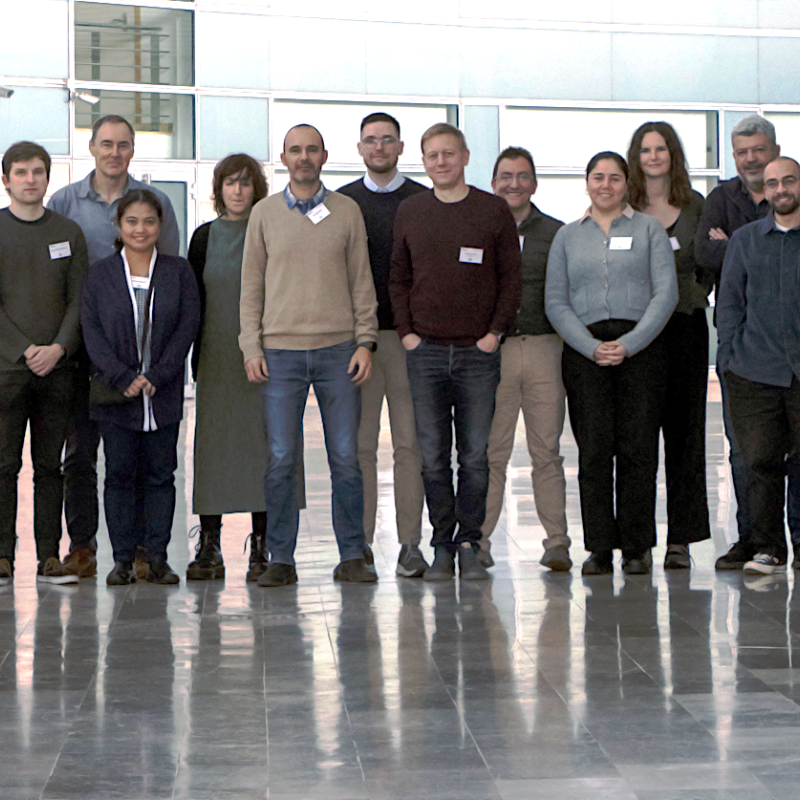Andreas Treu
Head of Department/Head of Research
Biography
Dr. Andreas Treu has been a research scientist at NIBIO (formerly the Norwegian Forest and Landscape Institute) since 2006 and works in the Department of Wood Technology. He graduated from the University in Göttingen, Germany, with a doctoral degree in Forest Sciences and Forest Ecology. He works on wood protection, modification, and anatomy.
Abstract
Modifying natural polymers with silicones gives new possibilities for packaging products and waste management. In this study, the innovative papers produced were altered following the reaction of polysaccharides and organosilicon compounds. The susceptibility of the studied material to biodegradation caused by a brown-rot fungus was assessed. Strength properties by tensile strength and dynamic mechanical analysis and hydrophobic properties by water uptake test and water contact angle analysis were evaluated. Moreover, elemental analysis by ICP method was controlled. The durability against fungi and the hydrophobic properties were increased by the modification. The fungal decay resistance of the silanized paper was reduced by water storage, which allows for managing paper waste. Cellulose-based paper treated with starch-modified methyltrimethoxysilane showed potential as a packaging material due to its reduced water uptake. Possible application areas could be corrugated boxes, cellulose thermoformed products for electronics, and food packaging. However, the water-repellent effect is limited to short-term exposure in humid conditions.
Abstract
Wood modification using polyesterification of sorbitol and citric acid is a novel environmentally friendly strategy for wood protection improving its dimensional stability and acts against fungal deterioration. Inelastic Raman scattering is sensitive to the molecules of high polarizability and both lignocellulose and aliphatic esters formed during the treatment are polar. Therefore, in the present study, the quality control of the treatment using a handheld Raman spectrometer equipped with 830 nm laser is suggested as a rapid and reliable approach. Raman spectra from six wood modification levels (resulting in different weight percent gain, WPG) of three different wood species (Silver birch, Scots pine and Norway spruce) as well as three sample preparation strategies (intact, sanded and milled wood samples) were collected, and further analyzed using a chemometric method. Best performing models based on Powered Partial Least Squares Regression predicted the WPG level at R2 = 0.85, 0.95 and 0.98 for birch, pine and spruce, respectively. In addition, a clear separation between hard and soft wood species was also captured. Especially for softwood species, the sample preparation method affected the model accuracy, revealing the best performance in milled material. It is concluded that by using handheld Raman spectrometer it is possible to perform accurate quality control of wood modified by polyesterification of citric acid and sorbitol.
Abstract
No abstract has been registered
Authors
Andreas Treu Katrin Zimmer Christian Brischke Erik Larnøy Lone Ross Foued Aloui Simon M. Cragg Per-Otto Flæte Miha Humar Mats Westin Luisa Borges John WilliamsAbstract
Timber structures in marine applications are often exposed to severe degradation conditions caused by mechanical loads and wood-degrading organisms. This paper presents the use of timber in marine environments in Europe from a wood protection perspective. It discusses the use of wood in coastline protection and archeological marine wood, reviews the marine borer taxa in European waters, and gives an overview of potential solutions for protection of timber in marine environments. Information was compiled from the most relevant literature sources with an emphasis on new wood protection methods; the need for research and potential solutions are discussed. Traditionally, timber has been extensively utilized in a variety of marine applications. Although there is a strong need for developing new protection systems for timber in marine applications, the research in this field has been scarce for many years. New attempts to protect timber used in marine environments in Europe have mainly focused on wood modification and the use of mechanical barriers to prevent colonization of marine wood borers. The importance of understanding the mechanisms of settlement, migration, boring, and digestion of the degrading organisms is key for developing effective systems for protecting timber in marine environments.
Abstract
No abstract has been registered
Authors
Gry Alfredsen Michael Altgen Mari S. Austigard Johan Mattsson Maria Nunez Lone Ross Sverre Aarseth Tunstad Andreas Treu Igor A. Yakovlev Nanna Bjerregaard PedersenAbstract
Abstract This study uses a novel combination of DNA metabarcoding, light microscopy, decay rating, moisture dynamics, and chemical analysis to investigate wood decay in cultural heritage cable car pylons in Svalbard. Uniform design but varying ages allowed analysis of time-dependent decay. Light microscopy revealed the use of both Picea abies and Pinus sylvestris . Decay progressed more rapidly near ground contact, influencing density, lignin, and holocellulose content, with lignin increasing over time. DNA metabarcoding and microscopy revealed dominant brown and soft rot fungi, with greater fungal diversity near ground level. Several new fungal species were identified for Svalbard and the polar regions. In the context of climate change, this highlights the global importance of monitoring fungal decay in wooden structures. The study emphasises the need for updated species lists and continuous monitoring, as new fungi may affect conservation strategies. The interdisciplinary method offers deeper insight into microbial interactions than single-method approaches.
Abstract
No abstract has been registered

